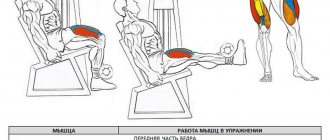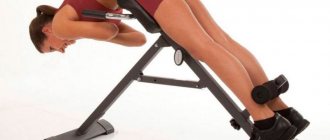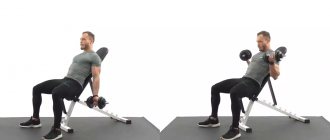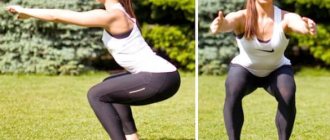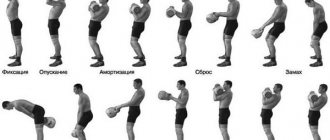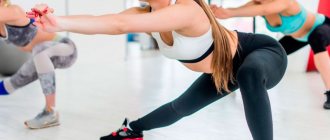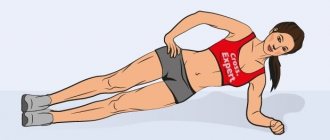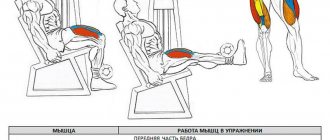Sisi squats are a specific exercise designed to develop the lower quadriceps femoris. It is very important to properly evaluate the goals that can be achieved by including such squats in your training program. This is not just an isolation exercise, it is an exercise that is performed without additional weights, or with very little weight. Most likely, you will use it during training to adjust your proportions, or as one of the exercises in a superset. In any case, this exercise is not intended to stimulate hypertrophy of muscle fibers, so there is no need to chase weights or pay excessive attention to it! Include this exercise only as an optional exercise and, at the same time, only if it is necessary to work the lower quadriceps.
Sisi squats are not recommended for athletes with knee injuries because they place quite a lot of stress on the knees. Yes, you are performing the exercise with your own weight, but when you weigh over 90 kg, this weight is quite enough for your knees to start “creaking”. In any case, squats should be performed slowly and under control in order to engage slow-twitch muscle fibers and also avoid injury to the knee joint. The exercise can be performed as a warm-up before heavy squats with a barbell. The exercise also develops coordination of movements and helps increase flexibility; in addition, it stretches the muscles well, so it can be used to complete the leg workout.
Heel-elevated squat
Sissy training video in Russian
For the newcomer to sissy squats, the heel-elevated squat may be the best place to start. You'll get the feeling of pressing with the forward half of your foot, and begin to wean yourself off the need to lean forward to maintain uprightness.
The exercise is essentially a Hindu squat with heels supported by a block, barbell plates, aerobics step…whatever is handy to get your heels a couple of inches off the ground. You'll want to use enough height to mimic the distance your heels come off the floor during a sissy squat, so look for a thicker plate or step to rest your heels on.
You can use dumbbells held at your sides, or goblet style, hold a weight plate to your chest or wear a weighted vest to add resistance.
How to do a proper heel-elevated squat
- Identify an aerobics step, thick barbell plate (~2”), or edge of a lifting platform…anything that will get your heels far enough from the floor so that you're pressing with the front half of your foot.
- Keeping your torso perpendicular, squat as low as you're able, pressing with the forward half of your foot.
- Fight any tendency to lean forward, keeping your torso as perpendicular to the floor as you're able.
After a few reps, you should find that your quads will begin to burn, especially in the vastus medialis, aka the teardrop.
Work up to high-rep sets to learn the movement, and once you've mastered it, you'll probably be ready to give sissies a go for real.
Inclusion in the program
Wumbuilding: exercises at home, photos and videos
This exercise is never the first thing on the plan. It is “finishing”, it is performed in 3-4 approaches until muscle failure. Therefore, the exercise is done without weight or with minimal weight.
In bodybuilding, it is often done in a superset with front squats or hack machine squats. But this is a tactic of an advanced level of complexity; it is of little use to a novice athlete.
Progression in this movement is usually achieved first by increasing the number of repetitions, and only then by adding working weight. By its nature, the exercise is not strength.
In programs for women, the exercise can be included if a developed quadriceps is required, and emphasis on it. In fitness bikini and simple “for yourself” exercises, the exercise is used quite rarely.
Sissy squats. We study all the subtleties and secrets
Hello again! Are you tired of us yet?
